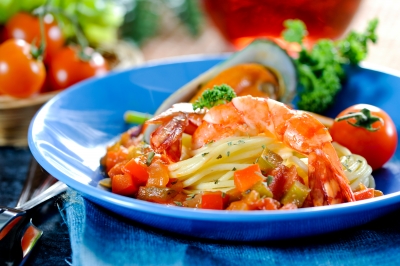Cook like an Italian!

 If you visited Italy recently and you’ve fallen in love with the Italian cuisine, then you certainly want to try some Italian recipes when you get back home – however, this is not easy. Italian people cook with the best ingredients, and some of the recipes are centuries old. This is why reproducing a truly genuine Italian dish is anything but easy – however, with the right practice and mindset, you can bring a piece of this marvelous country into your kitchen!
If you visited Italy recently and you’ve fallen in love with the Italian cuisine, then you certainly want to try some Italian recipes when you get back home – however, this is not easy. Italian people cook with the best ingredients, and some of the recipes are centuries old. This is why reproducing a truly genuine Italian dish is anything but easy – however, with the right practice and mindset, you can bring a piece of this marvelous country into your kitchen!
The serving sequence is also slightly different – unlike most people who serve the main meal in the evening, Italian people prefer to make lunch the most important meal of the day (this is referred to as “pranzo”). In some cases, the pranzo has up to six courses, including the antipasti and the aperitivo, while the regular meals do not have more than three courses (first and second course, along with a dessert).

FreeDigitalPhotos.net
The Main Courses
1. Aperitivo
Every formal meal starts with aperitivo, which is the first course served to standing guests. The aperitivo can be cheese, nuts, salt cured beef and such, and it is usually accompanied either by alcoholic or by non-alcoholic beverages.
2. Antipasto
The antipasto is the second course, it is slightly more consistent than the aperitivo and the diners eat it after they are seated. It is not unusual for guests to be full right after the first two courses, given the fact that appetizers are offered in very large quantities in Italy. The Antipasto may include seafood, different types of cheese, pork or bagna cauda, a very popular dish in Italy that includes crudities with garlic, anchovies, olive oil and some carpaccio, which is a special dressing.
3. Primo
The primo is actually considered the first course, which is also the most substantial one and it seldom includes meat – mainly, the primo includes either risotto or polenta. Guests who attend formal gatherings are usually offered more than just one primo, and the dishes are always served individually.
4. Secondo
As mentioned above, primo usually does not include meats – secondo (the second course) includes different types of meat, though, and they are often accompanies by several different dishes like roasted potatoes or veggies with olive oil dressing.
5. Dolce
After all the substantial courses mentioned above, there comes the dolce (the dessert) – provided that the guests are not full yes, of course. Panna cotta, gelato baked caked or tiramisu are by far some of the most popular and appreciated desserts in Italy, along with custard mixed with gelatine. In some cases, the dessert also involves assorted fruits combined either with nuts or with cheese.
6. Caffe e Digestivo
Last, but not least, there is the caffe e digestivo, which is basically either a digestive herb or a flavored liqueur coupled with an espresso coffee that aids digestion. The exact order may vary – in some cases, the coffee is served prior to the liqueur, while in other cases the liqueur is combined with the coffee.
If you are in love with Italian cuisine, then visiting Italy will certainly offer you a deeper insight into the delicious traditional dishes of Italy – after that, you can easily prepare tasty tiramisu in your very own kitchen!
Written by Maya Johnson, a blogger from Australia. A special thanks to David Marocchi for the insights.
Tags: guest, Italian, recipes